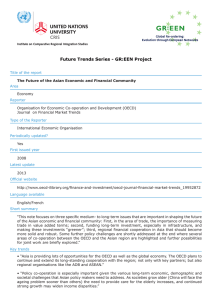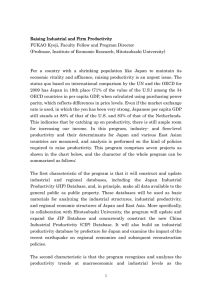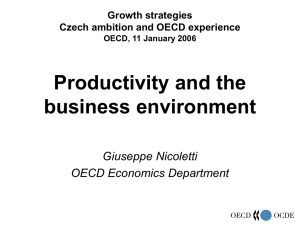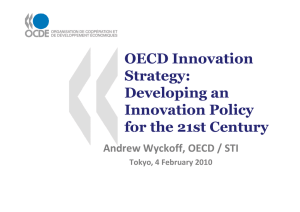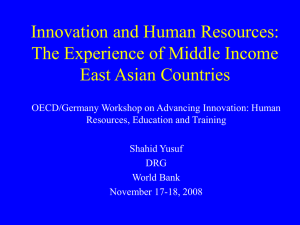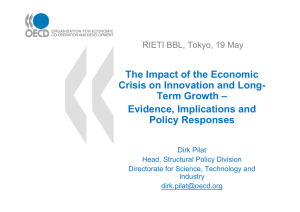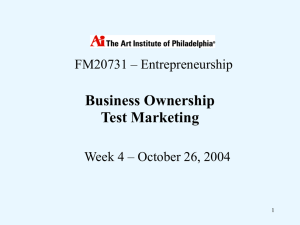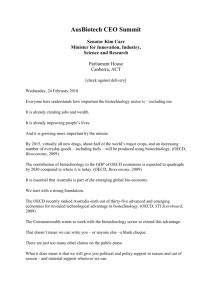Lectures-11a
advertisement
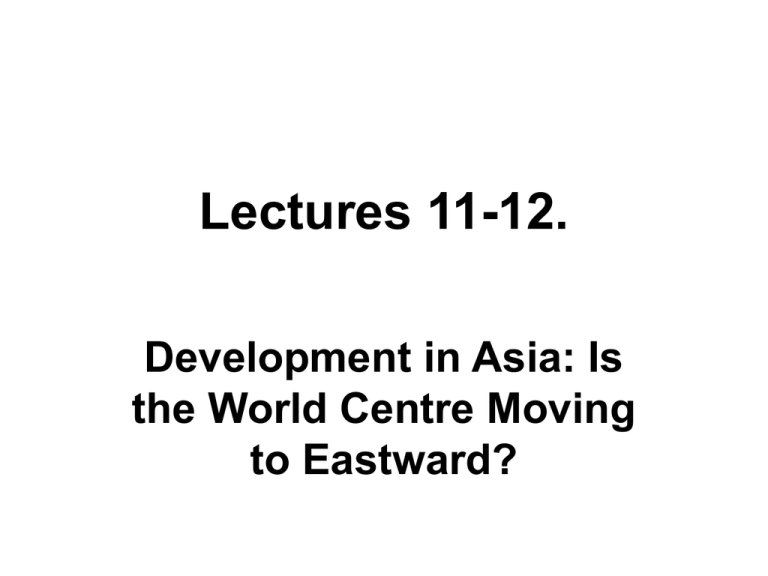
Lectures 11-12. Development in Asia: Is the World Centre Moving to Eastward? The first predictions of Asian crisis • Krugman P. The Myth of Asia's Miracle. – Foreign Affairs, 1994, N 6, November-December. • UNCTAD. Trade and Development Report 1996, Part 2, chapters I – III, esp. pp. 102-103. Japanese structure Keretsu (mainly outward-looking) Daughtercompanies Small firms Small firms Korean structure Outward-looking corporations Daughtercompanies Small firms Small firms Inward-looking firms • (Backward in technologies) The East Asian model of associateddependent development Outward-looking economy Competition at the world market Necessity to supply new goods and to renovate assortment of goods Ability to elaborate novelties Scientific research and technological capacities Expenditures for R&D (as percentage of GDP) in OECD (average) and some East Asian countries, 1995-1996 3.50 2.90 3.00 2.50 2.50 2.00 1.50 1.13 1.00 0.50 0.34 0.22 0.00 OECD Countries Singapore Malaysia Thailand South Korea Expenditures for R&D (as percentage of GDP) in some OECD and East Asian countries, 2005-2008 4.00 3.47 3.50 3.47 3.60 3.00 3.00 2.50 2.29 1.90 2.00 1.50 0.90 1.00 0.50 0.00 OECD in average EU-15 Finland Korea Sweden Singapore Malaysia The problem of creativity • Ng Aik Kwang. Why Asians Are Less Creative Than Westerners. Singapore: Prentice Hall, 2001: • A ‘cognitive conservatism’: • “a constellation of attributes, which leads the person to adopt a passive, uncritical and uncreative orientation to learning and to hold fatalistic, superstitious and stereotypical beliefs; as well as to be authoritarian, dogmatic and conformist.” (P. 65) • + • The lack of “individually-oriented achievement motivation” (Ibid., p. 113)

